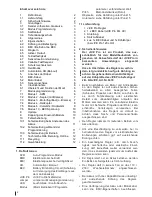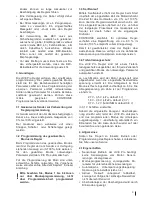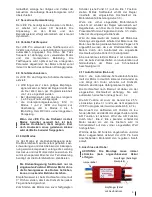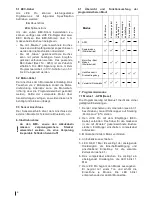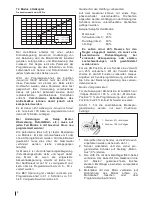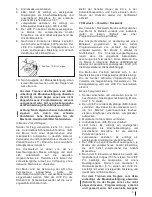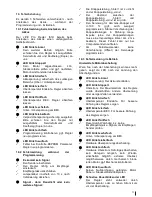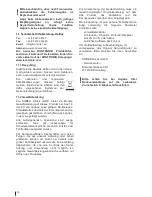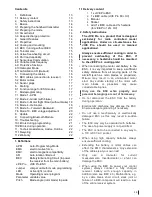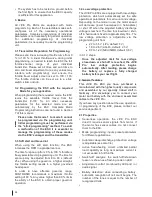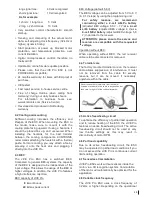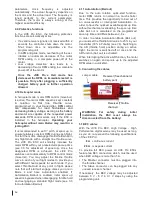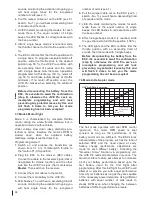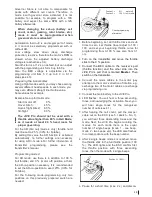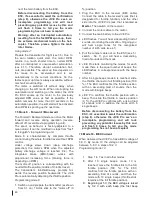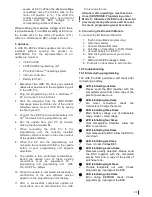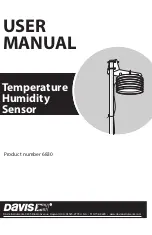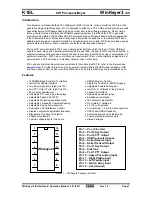
14
• The system has to be tested on ground before
the first flight, to ensure that the BEC
capacity
is sufficient for this application.
3. Basics
All JIVE Pro ESCs are equipped with
mode
programming. Each of the selectable modes self-
configures all of the necessary operational
parameters. Complex programming of individual
parameters is not necessary for general operation.
For
additional
programming
of
individual
parameters it is necessary to use
the programming
unit.
3.1 Transmitter Preparation for Programming
Please set a linear increasing throttle curve from 0
% to 100 %. A linear throttle-curve, during initial
programming, is needed to teach the ESC the full
throttle-channel
range
of
your
individual
transmitter. Please set all trims and sub trims to
zero and travel adjustment to (as any values may
interfere with programming), and ensure the
throttle travel adjust screen is set to 100 / 100.
The throttle channel can be set as to a stick,
switch, slider or
knob.
3.2 Programming the ESC with the required
Mode for your application
When programming the requested mode,
the ESC
learns the available throttle travel from the
transmitter
(0-100 %). All other necessary
parameters for the selected mode are set
automatically by the
ESC. Complete Mode
Programming instructions can be found in Section
7 of this manual.
Please note that mode 1 to mode 6 cannot
be programmed via the programming unit.
Initial programming must be performed via
the “stick programming” method. To avoid
a malfunction of the ESC it is essential to
manage the programming of these modes
via the ESC’s Jumper and the
transmitter.
3.3 Soft start and Governor
When using the soft start function,
the ESC
increases the RPM in a gradual manner.
The time for spool-up from 0 % to 100 % throttle is
freely selectable via
programming unit. The time for
spool-up may be adjusted from 8 to 60 s (default:
25 s
). When using the governor, a higher straight-
line throttle setting results in a higher governed
head speed.
In order to have effective governor range,
KONTRONIK recommends a maximum throttle
setting of 80 %. Any value higher than 80 % limits
the ability of the ESC to obtain proper governor
operation.
3.4 Low voltage protection
The JIVE Pro ESCs are equipped with low-voltage
protection, which will automatically set the safe
operational parameters for cell count and voltage.
Depending on the mode in use, the motor
speed
will decrease (lower head-speed in helicopters)
or shut off when the
adjusted battery discharge
voltage is r
eached. The time for slow-down / shut-
off in heli mode is fixed at approximately 30 s.
The
low voltage protection is adjustable via the
programming unit from
2.7 to 3.5 V (LiPo, default: 3 V)
1.8
to2.6 V (LiFePo, default: 2.3 V)
0.7 to 1.2V
(NiCd/NiMH, default 0.8 V)
in 0.1 V s
teps.
Once the adjusted limit for low voltage
slow-down or shut-off is reached, the JIVE
Pro
low
voltage
protection
begins
automatically. After landing, please charge
the battery or r
eplace a fully charged
b
attery before your next flight.
4. General features
This JIVE Pro ESC you have purchased is
manufactured with the highest quality components
and assembled by our specially trained staff in
Germany. We encourage you to connect your
motor and battery with
the enclosed, assembled
cables to the JIVE Pro.
If you have any question about the use,
operation,
or programming of the ESC, please
contact our
service department.
4.1 Properties
• Sensorless operation: the JIVE Pro ESC
doesn't require sensor signals from motor. If
the motor has sensor cables,
do not connect
them to the ESC.
• Mode programming: inputs preset parameters
for different applications.
• Automatic deep-discharge protection: voltage
is adjustable
(see also 3.4).
• Active freewheeling circuit: unlimited partial
load capability as long as maximum current is
not exceeded in
full throttle.
• Switch-off analysis: the switch-off/shut-down
reason is shown as a
flashing code on LED.
• Adjustment control: monitored by LED and / or
audio signal.
• Battery detection: when connecting a battery,
automatic recognition of cell count begins. The
number of the tones is equal to the number of
recognised Cells.
•
!
!


